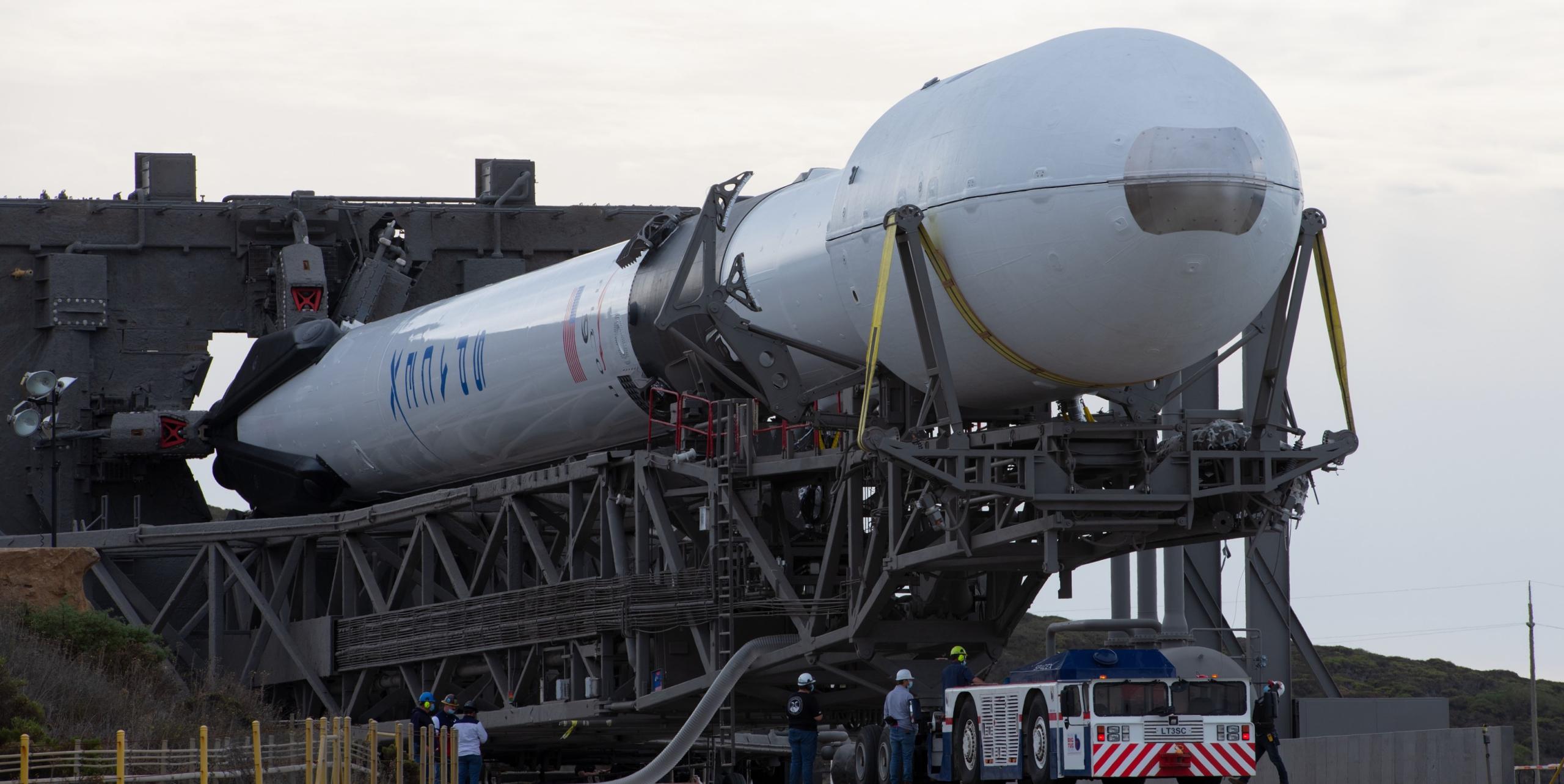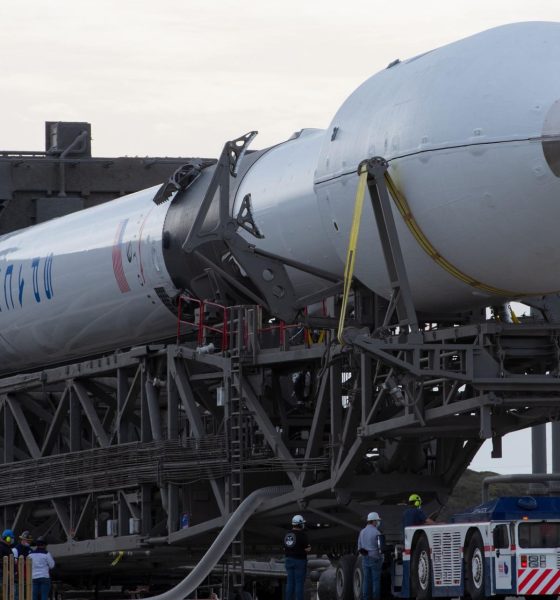

News
SpaceX delays Starlink launch to Sunday for “constellation optimization”
SpaceX has revealed a new and mysterious reason to delay its own rocket launch: something called “constellation optimization.”
Known as Starlink 2-4, the mission is now scheduled to launch a batch of 51 Starlink V1.5 satellites to a semi-polar Earth orbit no earlier than (NET) 8:15 am PST (16:15 UTC) on Sunday, January 15th. That represents a big shift in launch timing, as more recent attempts were aiming to lift off around 7-8 pm. A significant time change often implies that a launch is targeting a completely different destination, but data provided by SpaceX suggests that that’s not the case, raising more questions.
The update that's rolling out to the fleet makes full use of the front and rear steering travel to minimize turning circle. In this case a reduction of 1.6 feet just over the air— Wes (@wmorrill3) April 16, 2024
Starlink 2-4 is not new to launch delays. Originally scheduled to launch in November 2022, unspecified issues with the rocket caused SpaceX to indefinitely delay the mission. Launches for NASA and an Israeli company then took precedence, pushing Starlink 2-4 into early 2023. SpaceX announced a target of January 9th, but that attempt was called off by poor weather in the Pacific Ocean, where the mission’s Falcon 9 booster is scheduled to land.
SpaceX then delayed the mission from January 10th to the 11th “to take a closer look at data from second stage.” On January 11th, SpaceX delayed the mission to January 14th “to allow additional time for pre-launch checkouts.” Less than four hours later, SpaceX delayed the mission again, settling on the current January 15th target and debuting “constellation optimization” as a rare new cause of launch delays.

Logical speculation suggested that constellation optimization – combined with the major timing change – could have referred to a decision to launch Starlink 2-4 to a different orbital shell. SpaceX’s Starlink Gen1 constellation has five distinct shells, and the company’s Vandenberg Space Force Base (VSFB), California pad can theoretically launch to all of them. SpaceX’s Starlink V1.5 satellites are also theoretically identical, meaning that any satellite can launch to any shell and do its job without issue.
However, updated orbit data (Two Line Elements or TLEs) disseminated by SpaceX shows that Falcon 9 is still scheduled to launch Starlink 2-4 to a nearly identical orbit and thus the same Group 2 shell as before. “Constellation optimization” could instead refer to changing which planes the same Group 2 satellites end up at, tweaking where and when their added coverage will be felt most by Starlink internet users.
Next Spaceflight reports that Starlink 2-4 will use Falcon 9 booster B1075, marking the second time the company has debuted a new Falcon booster on an internal mission. Up until very recently, new Falcon boosters were almost always reserved for NASA or the US military, SpaceX’s most conservative customers. But SpaceX’s program of Falcon booster reuse has become so successful and so routine that even NASA and the military appear to be ambivalent about taking advantage of the first launch of a new Falcon 9.
B1075 will attempt to land on drone ship Of Course I Still Love You (OCISLY) around 662 kilometers (411 mi) southwest of California, off of Mexico’s Baja Peninsula. SpaceX will broadcast the launch and landing live, beginning around 8:13 am PST (16:13 UTC) on Sunday if the mission can avoid further delays.

Elon Musk
Elon Musk’s X will start using a Tesla-like software update strategy
The initiative seems designed to accelerate updates to the social media platform, while maintaining maximum transparency.

Elon Musk’s social media platform X will adopt a Tesla-esque approach to software updates for its algorithm.
The initiative seems designed to accelerate updates to the social media platform, while maintaining maximum transparency.
X’s updates to its updates
As per Musk in a post on X, the social media company will be making a new algorithm to determine what organic and advertising posts are recommended to users. These updates would then be repeated every four weeks.
“We will make the new 𝕏 algorithm, including all code used to determine what organic and advertising posts are recommended to users, open source in 7 days. This will be repeated every 4 weeks, with comprehensive developer notes, to help you understand what changed,” Musk wrote in his post.
The initiative somewhat mirrors Tesla’s over-the-air update model, where vehicle software is regularly refined and pushed to users with detailed release notes. This should allow users to better understand the details of X’s every update and foster a healthy feedback loop for the social media platform.
xAI and X
X, formerly Twitter, has been acquired by Elon Musk’s artificial intelligence startup, xAI last year. Since then, xAI has seen a rapid rise in valuation. Following the company’s the company’s upsized $20 billion Series E funding round, estimates now suggest that xAI is worth tens about $230 to $235 billion. That’s several times larger than Tesla when Elon Musk received his controversial 2018 CEO Performance Award.
As per xAI, the Series E funding round attracted a diverse group of investors, including Valor Equity Partners, Stepstone Group, Fidelity Management & Research Company, Qatar Investment Authority, MGX, and Baron Capital Group, among others. Strategic partners NVIDIA and Cisco Investments also continued support for building the world’s largest GPU clusters.
News
Tesla FSD Supervised wins MotorTrend’s Best Driver Assistance Award
The decision marks a notable reversal for the publication from prior years, with judges citing major real-world improvements that pushed Tesla’s latest FSD software ahead of every competing ADAS system.

Tesla’s Full Self-Driving (Supervised) system has been named the best driver-assistance technology on the market, earning top honors at the 2026 MotorTrend Best Tech Awards.
The decision marks a notable reversal for the publication from prior years, with judges citing major real-world improvements that pushed Tesla’s latest FSD software ahead of every competing ADAS system. And it wasn’t even close.
MotorTrend reverses course
MotorTrend awarded Tesla FSD (Supervised) its 2026 Best Tech Driver Assistance title after extensive testing of the latest v14 software. The publication acknowledged that it had previously criticized earlier versions of FSD for erratic behavior and near-miss incidents, ultimately favoring rivals such as GM’s Super Cruise in earlier evaluations.
According to MotorTrend, the newest iteration of FSD resolved many of those shortcomings. Testers said v14 showed far smoother behavior in complex urban scenarios, including unprotected left turns, traffic circles, emergency vehicles, and dense city streets. While the system still requires constant driver supervision, judges concluded that no other advanced driver-assistance system currently matches its breadth of capability.
Unlike rival systems that rely on combinations of cameras, radar, lidar, and mapped highways, Tesla’s FSD operates using a camera-only approach and is capable of driving on city streets, rural roads, and freeways. MotorTrend stated that pure utility, the ability to handle nearly all road types, ultimately separated FSD from competitors like Ford BlueCruise, GM Super Cruise, and BMW’s Highway Assistant.
High cost and high capability
MotorTrend also addressed FSD’s pricing, which remains significantly higher than rival systems. Tesla currently charges $8,000 for a one-time purchase or $99 per month for a subscription, compared with far lower upfront and subscription costs from other automakers. The publication noted that the premium is justified given FSD’s unmatched scope and continuous software evolution.
Safety remained a central focus of the evaluation. While testers reported collision-free operation over thousands of miles, they noted ongoing concerns around FSD’s configurable driving modes, including options that allow aggressive driving and speeds beyond posted limits. MotorTrend emphasized that, like all Level 2 systems, FSD still depends on a fully attentive human driver at all times.
Despite those caveats, the publication concluded that Tesla’s rapid software progress fundamentally reshaped the competitive landscape. For drivers seeking the most capable hands-on driver-assistance system available today, MotorTrend concluded Tesla FSD (Supervised) now stands alone at the top.
News
Elon Musk’s Grokipedia surges to 5.6M articles, almost 79% of English Wikipedia
The explosive growth marks a major milestone for the AI-powered online encyclopedia, which was launched by Elon Musk’s xAI just months ago.

Elon Musk’s Grokipedia has grown to an impressive 5,615,201 articles as of today, closing in on 79% of the English Wikipedia’s current total of 7,119,376 articles.
The explosive growth marks a major milestone for the AI-powered online encyclopedia, which was launched by Elon Musk’s xAI just months ago. Needless to say, it would only be a matter of time before Grokipedia exceeds English Wikipedia in sheer volume.
Grokipedia’s rapid growth
xAI’s vision for Grokipedia emphasizes neutrality, while Grok’s reasoning capabilities allow for fast drafting and fact-checking. When Elon Musk announced the initiative in late September 2025, he noted that Grokipedia would be an improvement to Wikipedia because it would be designed to avoid bias.
At the time, Musk noted that Grokipedia “is a necessary step towards the xAI goal of understanding the Universe.”
Grokipedia was launched in late October, and while xAI was careful to list it only as Version 0.1 at the time, the online encyclopedia immediately earned praise. Wikipedia co-founder Larry Sanger highlighted the project’s innovative approach, noting how it leverages AI to fill knowledge gaps and enable rapid updates. Netizens also observed how Grokipedia tends to present articles in a more objective manner compared to Wikipedia, which is edited by humans.
Elon Musk’s ambitious plans
With 5,615,201 total articles, Grokipedia has now grown to almost 79% of English Wikipedia’s article base. This is incredibly quick, though Grokipedia remains text-only for now. xAI, for its part, has now updated the online encyclopedia’s iteration to v0.2.
Elon Musk has shared bold ideas for Grokipedia, including sending a record of the entire knowledge base to space as part of xAI’s mission to preserve and expand human understanding. At some point, Musk stated that Grokipedia will be renamed to Encyclopedia Galactica, and it will be sent to the cosmos.
“When Grokipedia is good enough (long way to go), we will change the name to Encyclopedia Galactica. It will be an open source distillation of all knowledge, including audio, images and video. Join xAI to help build the sci-fi version of the Library of Alexandria!” Musk wrote, adding in a later post that “Copies will be etched in stone and sent to the Moon, Mars and beyond. This time, it will not be lost.”








